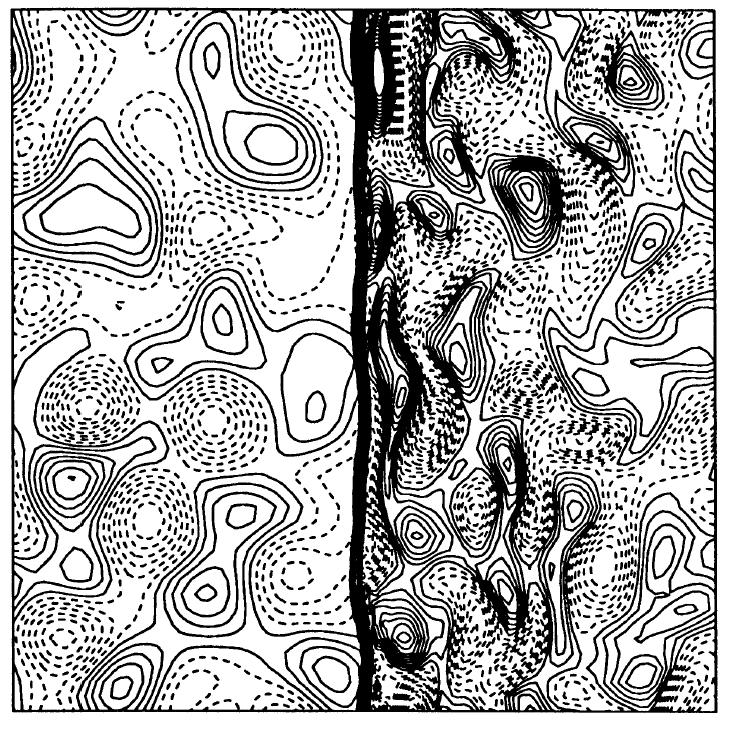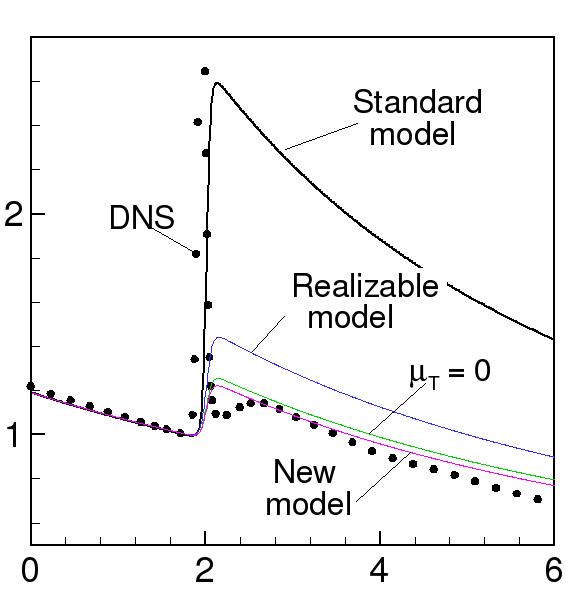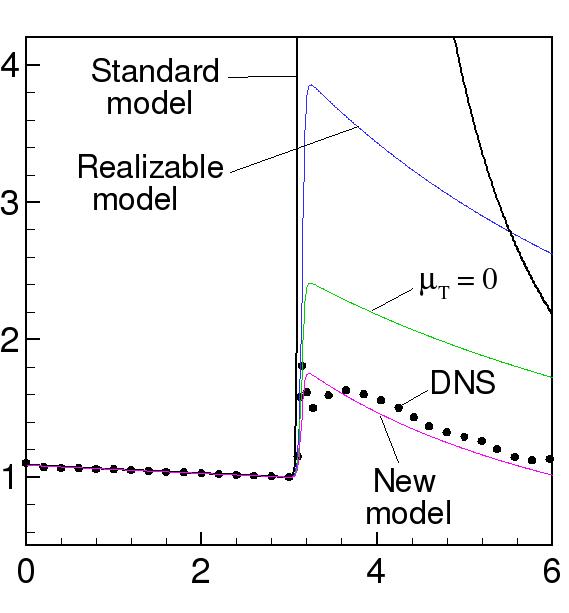Modeling shock unsteadiness in shock/turbulence interaction
The RANS (Reynolds averaged Navier-Stokes) equations caN yield significant error when applied to practical flows
involving shock waves. We use the interaction of homogeneous isotropic turbulence with a normal shock to suggest
improvements in the k <96>e model applied to shock/ turbulence interaction. Direct numerical simulation (DNS) and
linear analysis of the flow of isotropic turbulence through a normal shock is presented in literature, where it is found
that mean compression, shock unsteadiness, pressure-velocity correlation, and up-stream entropy fluctuations play an
important role in the interaction. Current RANS models based on the eddy viscosity assumption yield very high
amplification of the turbulent kinetic energy, k, across the shock. Suppressing the eddy viscosity in a shock improves
the model predictions, but is inadequate to match theoretical results at high Mach numbers. We modify the k equation to
include a term due to shock unsteadiness, and model it using linear analysis. The dissipation rate equation is similarly
altered based on linear analysis results. These modifications improve the model predictions considerably, and the new
model is found to match the linear theory and DNS data well.
Ref: Sinha, K., Mahesh, K. and Candler, G.V., "Modeling shock unsteadiness in shock turbulence interaction,”
Phys. Fluids, Vol. 15, No. 8, 2003.

Homogeneous isotropic turbulence passing through a normal shock.
Representative results:



Amplification of turbulenk kinetic energy across a normal shock at Mach 1.29, 2.0 and 3.0.

